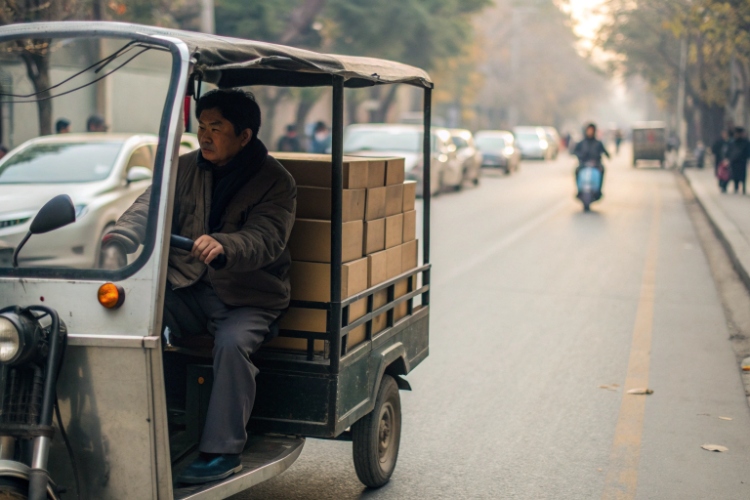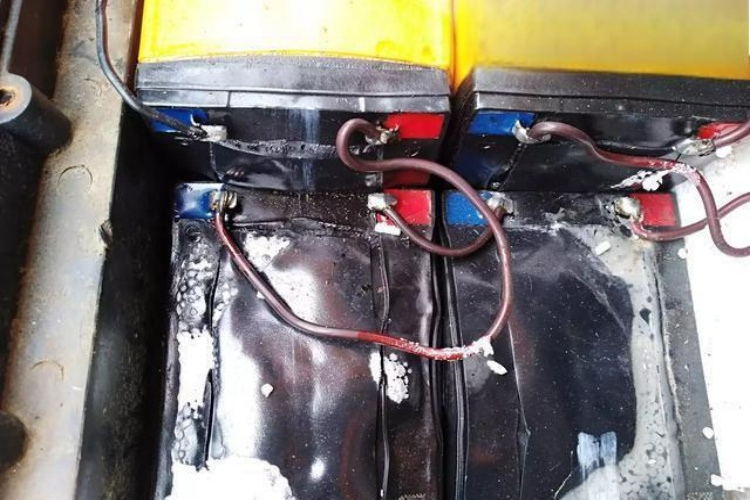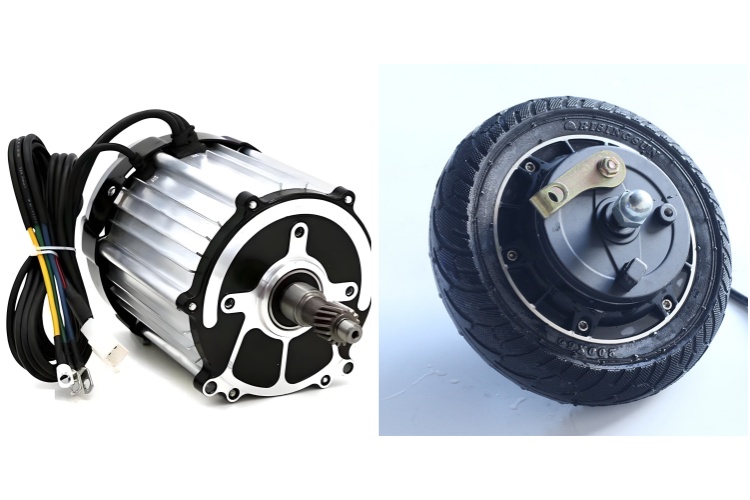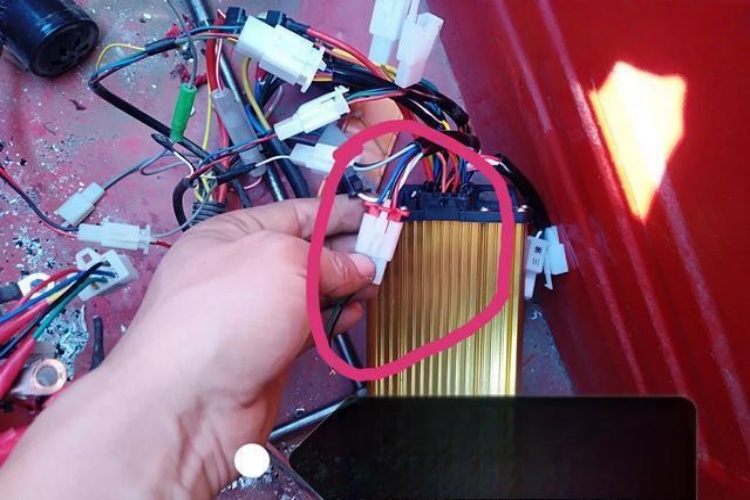Your electric rickshaw is your workhorse, but now it's losing speed. This slowdown hurts your delivery times and your bottom line. You need to find the cause fast.
A sudden loss of speed in a cargo electric rickshaw is most often caused by a weak or low-charge battery, which triggers the controller's undervoltage protection. Other common causes include motor demagnetization from overloading, mechanical issues like brake drag, or a faulty controller unit.

When a client calls me about a trike that's suddenly sluggish, it's a familiar story. They rely on that vehicle for their business, whether it's for last-mile delivery or transporting goods on a farm. Downtime is not an option. The good news is, the cause is usually one of a few common issues. As a factory insider, I've seen these problems countless times. Let's walk through the troubleshooting steps I share with my B2B partners, from the simplest checks to the more complex component failures, so you can get your fleet back to full speed.
Is a Weak Battery the Main Reason My Electric Rickshaw Loses Speed?
You've noticed your fully loaded trike struggles on hills and feels weak, even on flat ground. You suspect the battery, but replacing a battery pack is a big investment.
Yes, in most cases, a weak or low-charge battery is the primary reason for a slowdown. The controller has a built-in safety feature called "undervoltage protection" that cuts power to prevent battery damage, causing the rickshaw to run slower, typically when the charge drops below 25%.

This is the first thing I tell our distributors to check. The controller is the brain of your EV, and its first job is to protect the battery, which is the heart. When the battery's voltage drops to a certain point, the controller deliberately limits the power going to the motor. It’s not a fault; it’s a feature designed to extend the life of your battery. Forcing a nearly empty battery to deliver high power can damage it permanently. The specific voltage point depends on your system. From our factory experience, here are the typical cutoff points:
| Battery System Voltage | Undervoltage Protection Point (Approx.) |
|---|---|
| 48V Battery | 42V |
| 60V Battery | 53V |
| 72V Battery | 63V |
If your trike only slows down when the battery indicator is low, the solution is simple: keep it charged. But if it feels slow even with a full charge, your battery pack itself might be failing. Signs of a dying battery include physical swelling or bulging of the case, charging much faster than usual (e.g., in 2-3 hours), or a noticeably shorter travel range. Check the production date on the battery; most lead-acid batteries in heavy use last 1-2 years.
How Do Motor or Controller Faults Affect Tricycle Performance on the Road?
Your battery is healthy and fully charged, but the tricycle is still underperforming. You're starting to worry that it's a more serious problem with the motor or the electronics.
A faulty motor or controller directly impacts speed by either failing to produce enough power or failing to command it properly. Motor demagnetization from consistent overloading causes a permanent loss of torque, while a failing controller, the trike's "brain," can get stuck in a low-speed mode.

If the battery isn't the problem, the motor and controller are the next suspects. I often see motor issues with clients who use their trikes for heavy cargo. Many users treat their cargo trike like it has no limits, but every motor does. Consistently overloading the vehicle, especially when starting from a stop or climbing hills, forces a huge current draw. This overheats the motor, and over time, this heat weakens the magnets inside—a process we call "magnetic fade" or demagnetization. The motor loses its strength, and your trike becomes permanently slower and weaker.
The controller can also be the culprit. If its internal components fail, it might not send the right signals for full speed. Sometimes, the issue is simpler. I've had distributors call me frustrated, and the problem turned out to be a faulty three-speed switch. The rider thought they were in "high" gear, but the broken switch had the controller locked in "low." A technician can quickly diagnose this by directly testing the speed wires at the controller, bypassing the switch. If that fixes it, you just need a new switch, not a whole new controller.
Can Overloading or Low Tire Pressure Cause a Cargo Tuk-Tuk to Move Slower?
Your business depends on moving heavy goods, and you push your trike to its limit every day. Now it feels sluggish, and you wonder if the daily grind is finally catching up.
Absolutely. Low tire pressure and chronic overloading are two key factors that make a trike slower. Underinflated tires increase rolling resistance, forcing the motor to work harder. Overloading not only slows you down but also causes cumulative damage to the motor and shortens battery life.
This is a point I stress with all my clients, especially those in farming or logistics. These two issues are "silent killers" of performance. Low tire pressure is like trying to ride through mud. The tire flattens, more of its surface touches the road, and this creates friction, or "rolling resistance." The motor has to use more energy just to move, which drains your battery faster and reduces your top speed.
Overloading is even more damaging. While our trikes are built tough, there's a difference between a rated payload and what it can physically move. Exceeding the payload limit puts immense strain on the entire system.
Here’s a simple breakdown I share with fleet managers:
| Factor | Good Practice (Maintains Speed) | Bad Practice (Causes Slowdown) |
|---|---|---|
| Шина қысымы | Check weekly, inflate to the PSI on the sidewall. | Visually checked, looks "okay," but is actually low. |
| Loading | Stay within the manufacturer's payload capacity. | Consistently overloading by 20% or more. |
| Driving | Accelerate smoothly, avoid sudden starts. | Full throttle from a stop with a maximum load. |
Ignoring these things doesn't just make you slow today. It wears out your motor, ruins your battery, and leads to expensive repairs tomorrow.
What Quick Checks Help Restore Normal Speed for Daily Transport Use?
Your trike is slow, and you're losing money with every delayed delivery. You don't have a technician on hand and need some simple checks you can perform right now.
Start with the basics: ensure tires are fully inflated. Next, with the power off, push the trike to check for brake drag—it should roll freely. Finally, safely lift the rear wheels and check for any side-to-side wobble or grinding noises, which indicate a bad bearing.

Before calling for professional help, there are a few checks any operator can do. I always advise my clients to run through this simple list first.
-
Check for Brake Drag: Sometimes the brake doesn't fully release after you use it. This is very common with drum brakes, especially if they get rusty. To check, turn the power off and push the trike on a flat surface. It should roll easily with a gentle push. If it feels heavy or you hear a scraping sound, a brake is likely dragging. This forces the motor to fight against the brake, killing your speed and draining your battery.
-
Check the Rear Wheel Bearings: The bearings allow your wheels to spin freely. If one fails, it creates massive friction. Safely prop the rear axle up so the wheels are off the ground. Grab a wheel with both hands and try to wiggle it. There should be no wobble or "play." Spin the wheel by hand. It should turn smoothly and quietly. If you hear a grinding noise or it feels rough, you have a bad bearing that needs to be replaced.
-
Check the Speed Selector: This sounds obvious, but it happens! Make sure your high/medium/low speed selector switch is actually set to high. If the switch is faulty, you might be stuck in a lower gear without realizing it.
These checks cover the most common mechanical drag issues. If you've done these and the battery is fine, the problem is likely with the motor or controller, and it's time to see a qualified technician.
Қорытынды
A slow rickshaw is usually a sign of a few key issues. Regular checks on battery health, tire pressure, and brake function can prevent most problems and keep your business running smoothly.

